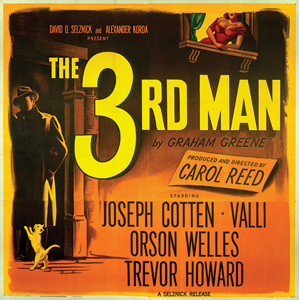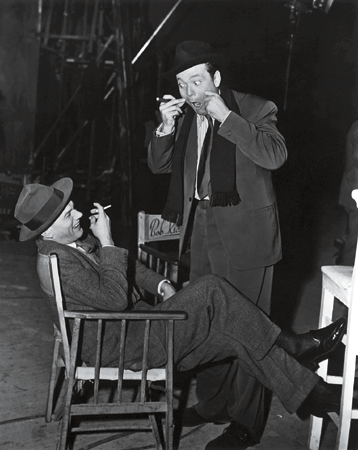
1949

MOVIE POSTER IMAGE ART/GETTY
The Third Man
DIR. CAROL REED

MARY EVANS/LONDON FILM PRODUCTIONS/BRITISH LION FILM PRODUCTIONS/RONALD GRANT/EVERETT
Orson Welles (far left) as the supposedly deceased Harry Lime in Carol Reed’s classic The Third Man.
When the down-on-his-luck American pulp writer Holly Martins (Joseph Cotten) arrives in postwar Vienna at the invitation of his friend Harry Lime (Orson Welles), he discovers that Lime is, in fact, dead—or seems to be. When he learns that Lime had been an unscrupulous racketeer involved in the city’s black market, Martins suspects that his friend was murdered . . . and begins to search for the unknown “third man” who was seen carrying Lime’s body.
The best British film noir—and one of the best films noirs ever—Carol Reed’s The Third Man is “genius,” David Koepp, the screenwriter behind Jurassic Park and the director of Secret Window, tells LIFE. Along with Odd Man Out (1947) and The Fallen Idol (1948)—the two Reed films that immediately preceded it—“ The Third Man is among the greatest one-two-three punches any director has ever thrown,” Koepp adds.
The film was one of three classic collaborations between the director and novelist-screenwriter Graham Greene, who also wrote The Fallen Idol and 1959’s Our Man in Havana. Greene initially wrote The Third Man in the form of a novella, which featured a happy ending that Reed vetoed in the film. “I don’t think anything in life ends ‘right,’” said Reed, who later won the Best Director Oscar for, of all things, 1968’s Oliver!
As with so much noir, the film derives a large share of its power from the setting—decaying, bombed-out Vienna, beautifully shot in high-contrast black and white. In Greene’s words, Vienna was “simply a city of undignified ruins which turned that February into great glaciers of snow and ice.”
The film’s distinctive look helped drive the rumor that Welles himself directed the picture. Though this has been discounted, director-critic Peter Bogdanovich has said that Reed was deeply influenced by Welles’s work and that The Third Man would be unthinkable without the influence of Welles’s 1941 classic, Citizen Kane. Welles is, however, widely considered the source of the famous line Lime utters in Vienna’s famed Prater amusement park: “In Italy for 30 years under the Borgias, they had warfare, terror, murder, and bloodshed, but they produced Michelangelo, Leonardo da Vinci, and the Renaissance. In Switzerland, they had brotherly love, they had 500 years of democracy and peace—and what did that produce? The cuckoo clock.”

EVERETT
Joseph Cotten and Paul Hörbiger watch as Alida Valli places a call.

ERNST HAAS/GETTY
Director Carol Reed (left) and Orson Welles filming in the sewers of postwar Vienna. The film is remarkable on many levels, not least of which is its bleak, stark setting—and the soundtrack’s distinctive zither music, played by Anton Karas. (In a happy accident, he was discovered in a restaurant during the production.)

EVERETT
Cotten and Welles, who had worked together on Welles’s Citizen Kane and The Magnificent Ambersons and in Welles’s Mercury Theatre.